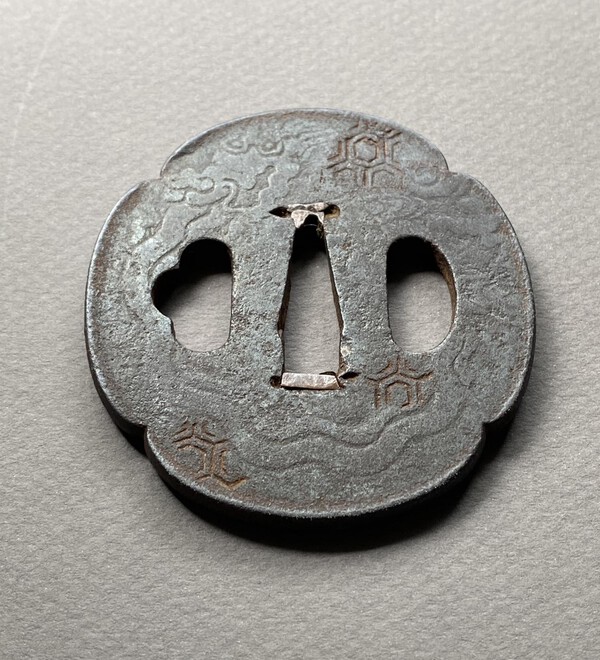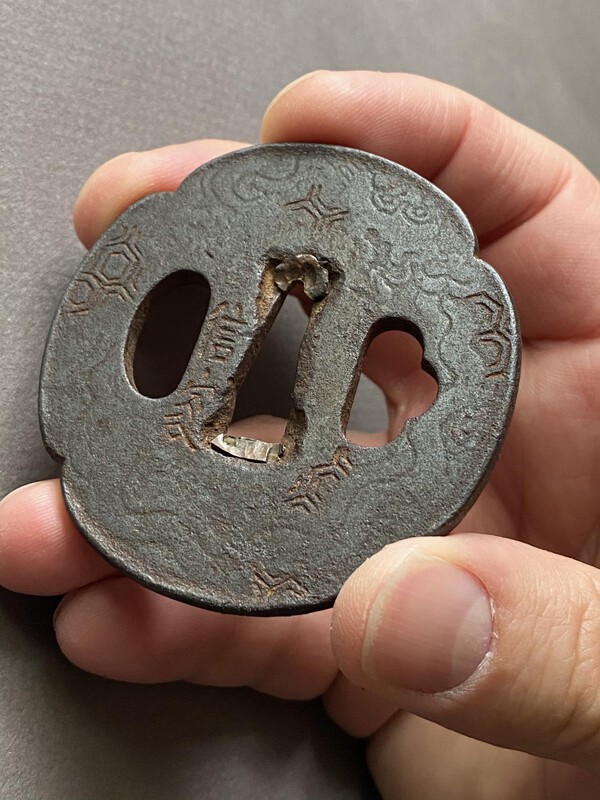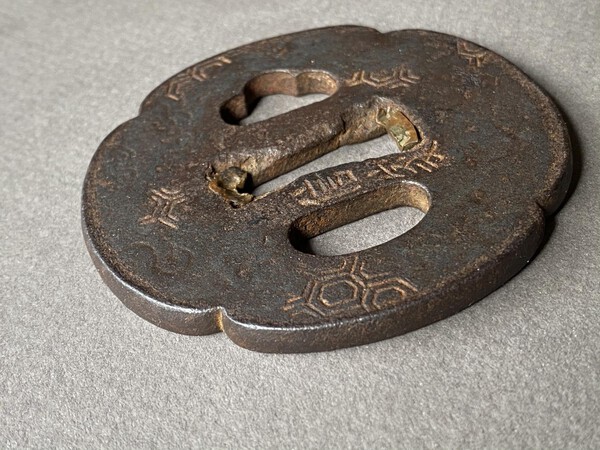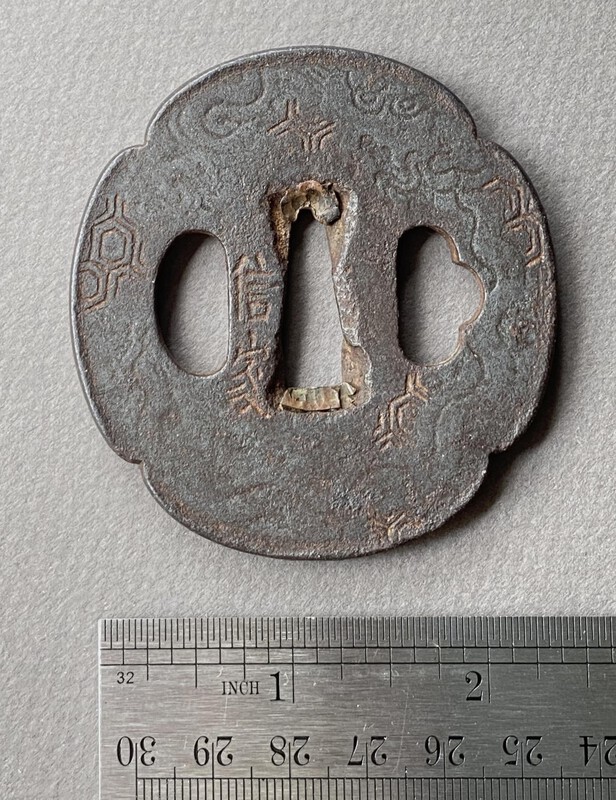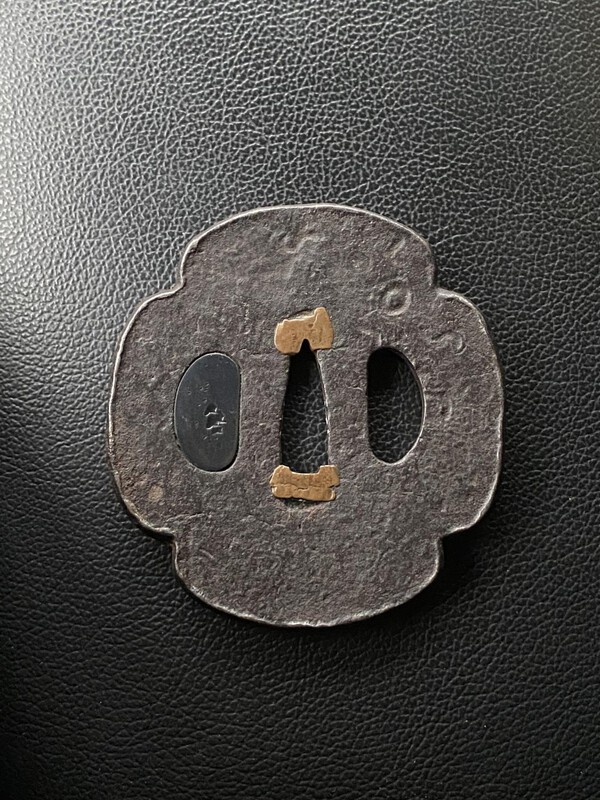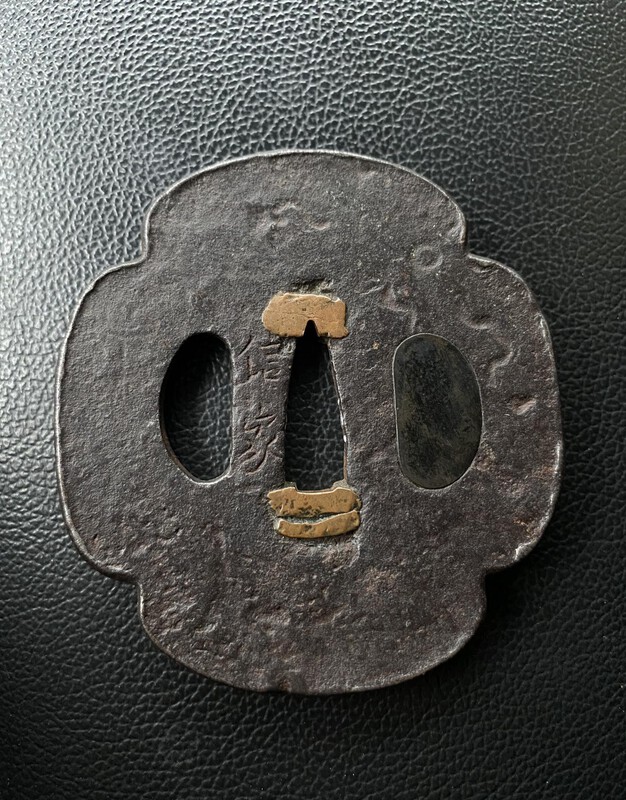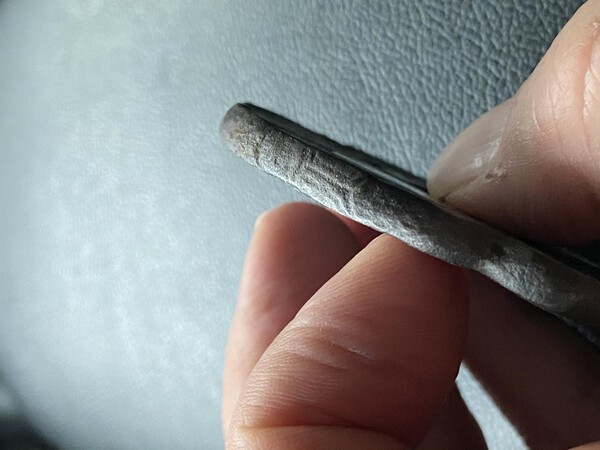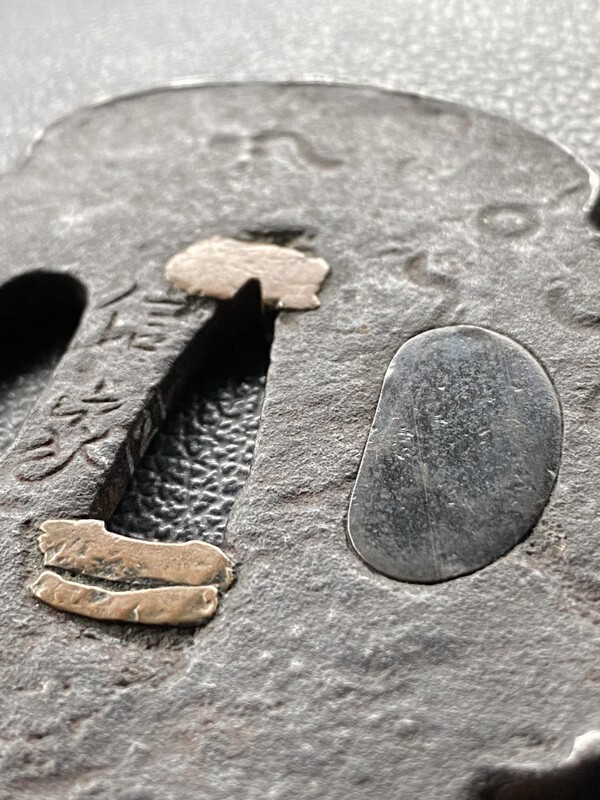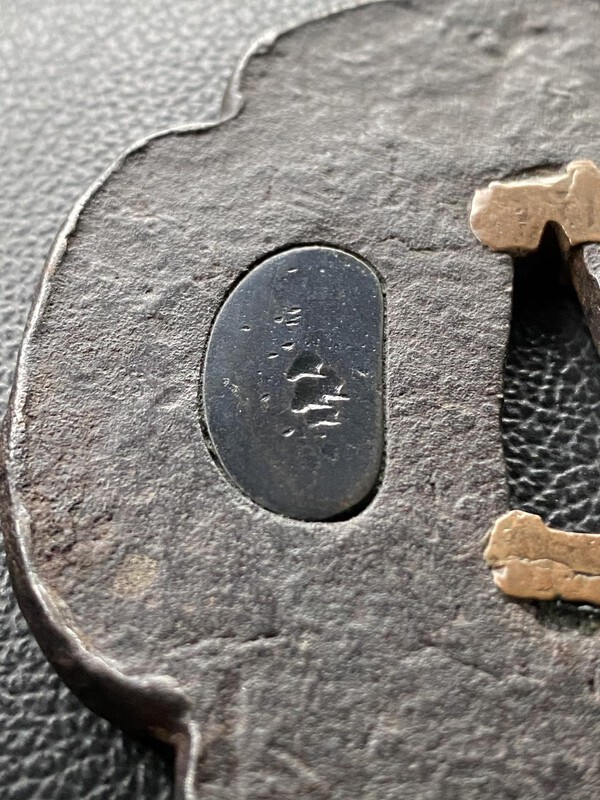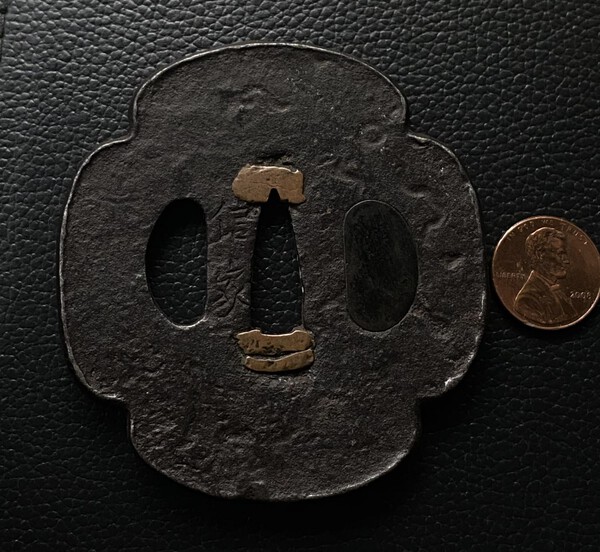-
Posts
16 -
Joined
-
Last visited
About DMac
- Birthday May 8
Profile Information
-
Gender
Male
-
Location:
Maryland
Profile Fields
-
Name
David MacNeill
DMac's Achievements
-
Yes that’s correct I believe it was Markus. That would be great if something could be arranged. And thanks for the reply Steve I will definitely keep the Kazuo book on my list.
-
Also this reminds me - I did see in a 5 year old post that various members all went in on reproducing a book regarding Nobuie approx 200 pages and a PDF format e book as well. Any of these still around? Anyone willing to share the PDF?
-
So yes I also considered what you mentioned and the mei and the Kikko lines actually are quite similar and the rust around the rim is also matching which seems more contrasty in the photos. In hand the difference is not that dramatic. What I noticed is the Kikko and the mei seem to be carved slightly deeper than the other (dragon?) design on the tsuba. There is however matching rust in the nakago ana and around the mimi so I’m not sure if these are rusting more prominently because a different technique was used to apply the Kikko design and mei, or because the way it was handled prior, I’m not sure. I do know that the subtle design flows with the Kikko , as in the two were made while considering placement of each other so I don’t believe one was added at a later time. But I will say although the photos are clear and sharp, the photos make the color contrast much more drastic than it actually is. There is a very slight greyish blue tint to the surface but overall it has a reddish brown copper tint to the piece. Oh and no i have not purchased the book from Grey yet it’s a little out of my price range at the moment. I’m the only one working in my entire extended family so I’m trying to remain frugal if you will.
-
Thanks for the reply. I agree with that and that’s why I purchased it. And it’s funny because ironically It appealed to me before I even saw the mei. I dont purchase a tsuba based on the mei. There are plenty of so called genuine Nobuie mei tsuba which do not appeal to my liking whatsoever, and regardless of the assessed value I am not interested in possessing it. I look for artistic qualities such as composition, textures and patterns as well as skill to appreciate. And along the lines of the quote from Hayashi there is such grey area and subjective interpretation in regarding Nobuie mei that I had consulted everything else about the tsubas character first before it influences me. I personally like this piece, in fact it may be my favorite at the moment. Thanks again.
-
Greetings everyone - I’m posting a tsuba I purchased back in March, and just received yesterday due to major COVID related shipping delays in Japan. It’s pretty solid piece and I admire the subtle work on the surface which appears to be a dragon and possibly clouds? I imagine it was more prominent before time and rust degrade the metal.
-
I’ve just received another “Nobuie” tsuba that I purchased In late March before the one I’ve posted above. It was held up in shipping as Japan reduced flights and stopped outgoing mail. Should i post it here since it’s related- or start another thread?
-
-
This was my thinking also, something similar to the cherry blossom, but a bit darker.
-
Yes I see! Very interesting. Did this imagery have any underlying meaning to the tsuba-ko or samurai?
-
I just learned something new that is somewhat exciting- to me anyway! While studying a glossary of terms relating to tsuba, I came across the term Kosuke-Tagane which means wide carving resembling worm eaten wood- I knew that is what the marks on the tsuba resembled to my eye ! I used to work in the high end flooring industry with various exotic woods and reclaimed wood became trendy and still is today. These marks were immediately recognizable to me. I never expected there would be a term for that as I have not seen other examples applied on a tsuba as of yet.
-
Steve thank you for your reply- it is informative and thank you for taking time to explain it to me. I did not know there was a book solely focused on the study of Nobuie and I will definitely seek it out. I would like to speak further about the tsuba and I will PM you soon. I am currently in the process of moving so when I take my break tonight I’ll send a message! Best- David
-
I agree with everything you have said. I too observed that the nakago ana held a blade significantly bigger than its most recent mounting, that indicates to me that it could have been used or around for quite a while and was valued enough for someone to mount at least twice judging the size of the sekigane and tagane ato it would seem three times. The ume also implies repurposing. I like the lack of decoration and the subtle use of kikko on the Mimi. There is a subtle marking on the hira that seems deliberate as it is found on both sides and resembles worm damage in wood, that’s what it reminds me of... Now, I suppose my observations and yours don’t a Nobuie make. So back to my wondering. I am also a detective with the countries 8th largest police department. All of these things tell me a story and should be considered together. I’ve looked at several “papered” Nobuie tsuba which simply say the conclusion is the mei says Nobuie but does not conclude whether the tsuba is genuine or “fake”. In fact I don’t know how someone could possibly tell one way or another, it’s literally an educated guess. Use all the information you have and make a call. What is the baseline of judgement set upon? Who was the person who decided what was genuine and what was fake? Do they let their personal biases affect their opinion and What are their qualifications? Is it in the best interest of collectors to say there are only 5 genuine mei in the world and the rest are gimei- well the person that owns the genuine raise the value of his piece. I personally am not interested in the value of this tsuba, holding it jn my hand I can see someone clearly used it and valued it. That to me is enough. These are all thoughts I’m having and I’m just thinking out loud here. The more I think about it the more I am convinced a lot of grey area exists on this topic. Very intriguing!
-
Hello ! Thanks for the welcomes and replies so far. From my research so far most of what I have read is in the belief that there was an “original” Nobuie and then following generations, as well as the likelihood of a school under his direction signing work with his mei. So I’m wondering how does one analyze a tsuba to conclude whether the signature is forged or “genuine”. I am an artist and I would say I probably rarely sign my name twice the same way. In fact my hand writing will vary from print to cursive to block letters depending on how i feel or how fast I’m working. I also understand trying to judge an item from pictures is probably quite difficult. Regarding the tsuba itself I have no doubt it’s of some age, as I do have some experience looking at countless tsuba and several books over the last couple years, and have come to understand what to look for when trying to avoid forgeries or reproductions. As for the mei I have seen several pictures online almost identical to this one, including one posted on shibuiswords.com passage about Nobuie tsuba- but again, I know there is constant debate about what is what and how old it is. I look forward to everyone’s input on the matter. Thank you!
-
The darkest photo represents the actual color of the tsuba the most accurately in natural light. The others I suppose are accurate in brighter lighting conditions.





